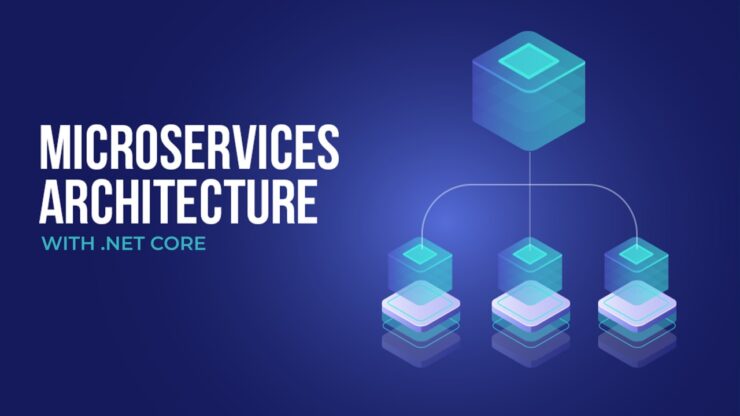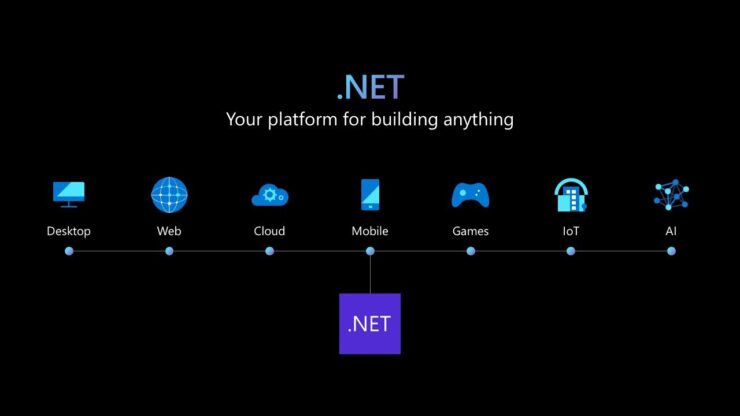In the ever-evolving landscape of software development, staying up-to-date with the latest trends is crucial to remain competitive. This holds particularly true for .NET software development, which continues to experience significant advancements in 2024. Whether you’re a seasoned developer or just starting out, understanding the latest trends and best practices in .NET development can greatly enhance your skillset and project outcomes.
Evolving Landscape of .NET Development
.NET, Microsoft’s widely-used framework, has undergone impressive transformations in recent years. The introduction of .NET 6 and .NET 7 brings forth a host of new features and improvements, making it a pivotal time to upgrade your projects. Key enhancements include improved performance, enhanced cross-platform capabilities, and increased developer productivity. By adopting the latest .NET versions, you can leverage these advancements to build more efficient and robust applications.
Top .NET Development Trends in 2024

1. Cross-Platform Development with .NET MAUI
.NET MAUI (Multi-platform App UI) is a game-changer for developers aiming to create cross-platform applications. With .NET MAUI, you can build apps that run seamlessly on multiple platforms, including Windows, macOS, iOS, and Android. The framework provides a unified development experience, reducing the need for platform-specific code. This simplifies maintenance and accelerates development, ultimately saving time and resources.
Furthermore, .NET MAUI introduces a single codebase for different platforms, allowing developers to create consistent user experiences across devices. This consolidation minimizes the need to maintain separate codebases for each platform, thus reducing development effort and potential inconsistencies.
2. Serverless Computing with Azure Functions
Serverless architecture is gaining momentum in the development community, and .NET developers can benefit from Azure Functions. These serverless computing services allow you to build and deploy applications without the need to manage the underlying infrastructure. By using Azure Functions, you can focus on writing code while Azure handles scaling, maintenance, and availability, resulting in more efficient and cost-effective applications.
Moreover, Azure Functions provide automatic scaling based on demand, enabling applications to handle varying workloads without manual intervention. This scalability at chudovo.com is particularly advantageous for applications that experience spikes in traffic, such as e-commerce platforms during holiday seasons.
3. Microservices Architecture and .NET

Microservices have revolutionized application architecture by breaking down monolithic applications into smaller, manageable services. .NET’s support for microservices enables developers to build scalable and resilient systems that can be deployed independently. This approach enhances development agility and allows teams to adapt to changing requirements more effectively.
In a microservices architecture, each service can be developed, tested, and deployed independently. This enables teams to work on different services simultaneously, improving development speed and flexibility. Additionally, microservices facilitate continuous delivery and deployment, as updates to individual services can be rolled out without affecting the entire application.
4. AI and ML Integration with .NET

Artificial Intelligence and Machine Learning are becoming integral to modern applications. .NET provides tools and libraries that facilitate seamless integration of AI and ML capabilities. From predictive analytics to natural language processing, .NET empowers developers to create intelligent applications that provide enhanced user experiences.
For instance, the integration of ML.NET, a cross-platform, open-source machine learning framework, enables developers to build custom machine learning models using C# without requiring expertise in machine learning algorithms. This democratizes machine learning development and allows for the creation of applications that leverage data-driven insights.
5. Blazor WebAssembly for Interactive Web Apps
Blazor WebAssembly is a cutting-edge technology that allows developers to build interactive web applications using C# and .NET instead of JavaScript. This approach simplifies the development process and enables code-sharing between client and server applications. With Blazor WebAssembly, you can create dynamic and feature-rich web apps that offer a seamless user experience.
Blazor WebAssembly combines the power of C# and .NET with the flexibility of WebAssembly, allowing developers to build web applications that perform and feel like traditional desktop applications. This technology not only enhances development productivity but also enables the creation of high-performance web applications with rich user interfaces.
Best Practices for .NET Development in 2024

1. Utilizing Containerization with Docker
Containerization with Docker is a practice gaining traction due to its ability to streamline deployment and scalability. By packaging applications and their dependencies into containers, developers ensure consistency across different environments. Docker simplifies the deployment process, minimizes conflicts, and enhances collaboration between development and operations teams.
Docker containers encapsulate applications and their dependencies, eliminating “it works on my machine” issues. This consistency ensures that applications behave the same way across development, testing, and production environments. Furthermore, Docker images can be easily versioned and shared, improving collaboration and reducing the time spent setting up development environments.
2. Embracing DevOps for Continuous Integration and Deployment
DevOps practices promote collaboration between development and operations teams, resulting in faster delivery of high-quality software. By implementing continuous integration (CI) and continuous deployment (CD) pipelines, you can automate testing, build, and deployment processes. This approach leads to shorter release cycles and more reliable software updates.
In a DevOps environment, every code change is automatically integrated and tested. This early detection of issues minimizes the risk of defects reaching production. Furthermore, automating deployment through CI/CD pipelines ensures that updates are deployed consistently and quickly, reducing manual errors and enabling faster time-to-market.
3. Security Considerations in .NET Development

As applications become more complex, security becomes paramount. In .NET development, it’s crucial to implement security best practices to protect your applications from vulnerabilities and attacks. Regular code reviews, secure coding guidelines, and regular updates of dependencies are essential to maintaining application security.
Using the latest version of .NET ensures that you have access to the latest security patches and updates. Additionally, following secure coding practices, such as input validation, authentication, and authorization, helps safeguard applications from common security vulnerabilities like SQL injection and cross-site scripting (XSS).
4. Performance Optimization Techniques
Performance is a key factor in user satisfaction. Utilize techniques such as code profiling, caching, and asynchronous programming to enhance the speed and responsiveness of your .NET applications. Tools like Performance Profiler in Visual Studio can help identify bottlenecks and areas for improvement.
Caching frequently accessed data can significantly reduce database and network latency, improving application performance. Asynchronous programming allows applications to handle multiple tasks concurrently, preventing UI freezes and ensuring smooth user experiences. By analyzing performance bottlenecks using tools like Profiler, developers can identify areas for optimization and fine-tune their applications.
Future Outlook for .NET Development

The future of .NET development looks promising, with Microsoft continuously investing in the framework’s growth. Developers can expect more innovations, tools, and libraries to further enhance productivity and flexibility. As the technology landscape evolves, .NET will likely play a pivotal role in enabling developers to create modern, scalable, and intelligent applications.
With the rise of cloud computing, edge computing, and the Internet of Things (IoT), .NET developers can anticipate frameworks and tools tailored to these domains. Microsoft’s commitment to open-source development and community collaboration ensures that .NET will remain relevant and adaptable to emerging technologies.
You can also read about how Microsoft 365 transforms the way we work in our daily workplace.
Conclusion
In the dynamic realm of software development, staying informed about the latest trends and best practices is non-negotiable. As demonstrated by the advancements in .NET development in 2024, embracing these changes can significantly impact your projects’ success. Whether you’re interested in cross-platform development, serverless architecture, microservices, AI integration, or performance optimization, there’s a wealth of possibilities awaiting exploration in the world of .NET development. By combining these trends with best practices like containerization, DevOps, security considerations, and performance optimization, you’ll be well-equipped to create robust, efficient, and future-proof .NET applications.
Related Posts:
- 20 Best Gaming Headset Under 50$ 2024 - for PC, PS4,…
- 10 Best External Hard Drive 2024 - Compatible With…
- How Microsoft 365 Is Transforming Hybrid Working
- 12 Best Car Wax For Black Cars 2024 - Protection and…
- Top 10 Best Paint Sprayer For Cabinets 2024 -…
- 15 Best Dog Food For Allergies 2024 - Adult, Puppy…







